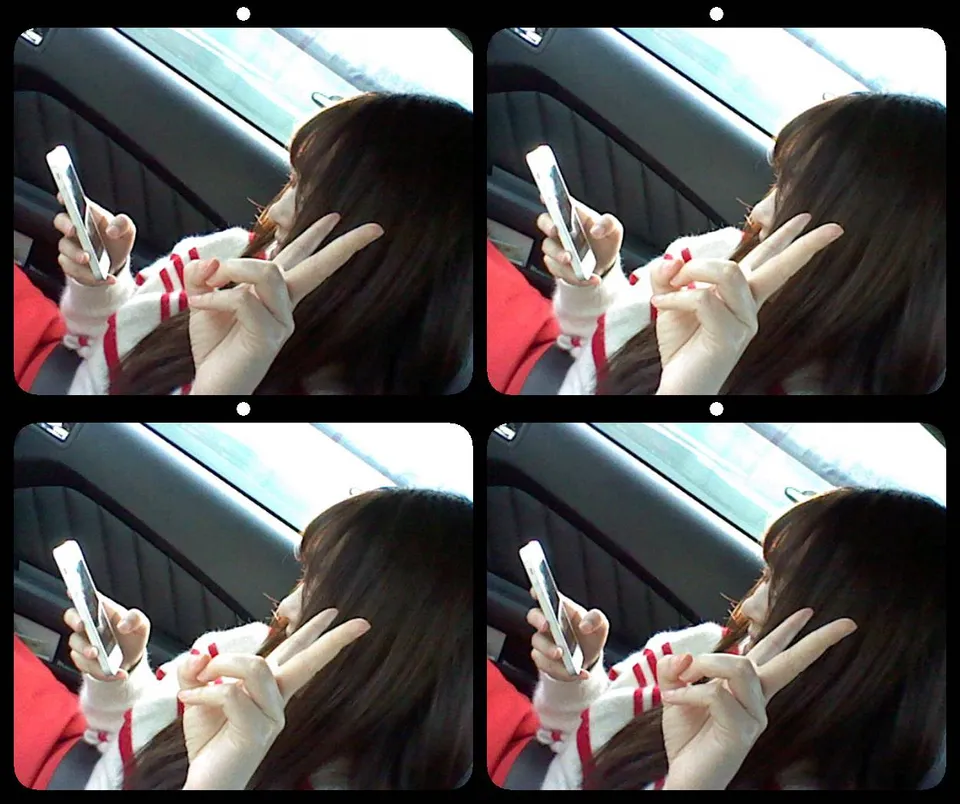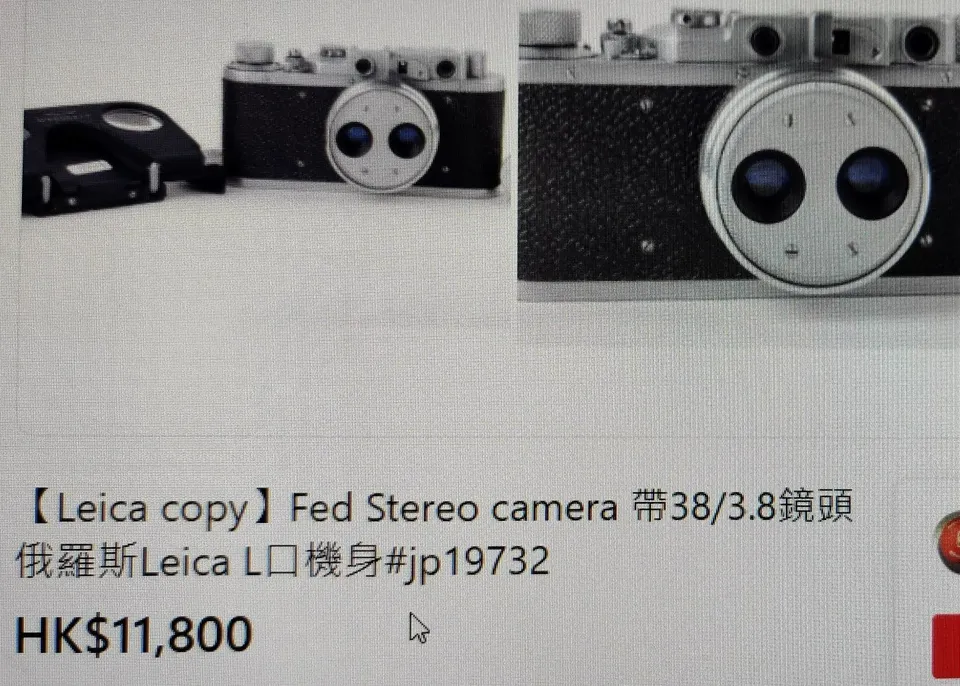Stereography Part 1 - Wiggle the wigglegram
Are you able to cross your eyes to align dots on the lower part of below image? Or, not cross your eye and still align the dots on the upper part of the same? Does she look 3D to you?

No? Try this.

Does she look 3D to you now? Wigglegram is obviously easier to view for laymen than cross/parallel naked eye stereogram. Above
About Stereography
Stereography had existed long before digital photos that wiggles (GIF) came to be, and even before photography came to be. In 1838, Sir Charles Wheatstone invented the first Stereoscope—a binocular type device that shows the viewer two images at alight horizontal offsets, wherein human brain naturally marry the two images into one, and the offset is perceived as depth information.
Depth can be perceived when both eyes are congesting two pieces of visual information (picture/photo), where the brain then takes the slight difference and convert that into perception of depth. That's why human's sense of distance requires binocular vision—it needs 2 images to begin with.
The two images may look the same when looking side-by-side. However when detailed inspected, slight offsets in positioning of objects can be found. The closer an object, the larger the offset.

When I first visited San Francisco in 2016, I discovered the Musée Mécanique where (somewhat) operational vintage arcade machines were made available for the curious minds only at a cost of US 25¢.
No, judging from the age of this thing, it's not the kind of VR goggles that people are accustomed to now. This is pretty much a split-image stereoscope which projects two slightly offseted images to each of your eyes. For a glass wearer, that didn't look 3D (or 3-D) to me before the times was up.
About Wigglegram
Later, as one of the bad influences of using Instagram, I discovered what's called "Wigglegram" and the camera that promotes it—RETO3D. Before you even think about buying one, note that it's anecdotally as plasticky as the Action Tracker Sports 35 and breaks pretty much the same way where the teeth of the plastic film advance gear breaks.
Does it worth the fetching price of US$100 if it may not survive the first couple rolls? Your call. We need better, more proper cameras that's not made using plastics like the Stereo Realist, Nishika N8000 or Fujifilm FinePix Real 3D W3.
But I digress.
As you have seen in an earlier section of this post, where an 3D effect is more readily perceived using a "wiggling" or quickly switching pair of image, than a static pair of two images.
Perception of depth can not only be attained by simultaneously viewing two images with two eyes, but also by viewing two quickly switching (wiggling) images, à la viewing an animation, wherein the brain interprets how the objects move in relation to each other as the viewpoint changes and translates that into sense of depth.
Because wigglegram is an animation, it is not limited to only 2 images. RETO3D has 3 lenses to capture 3 images, and later can be combined into digital animation. The difference between a 2-frame and 3-frame wigglegram can be seen below.


In the age of short video (snaps/stories/reels…) sharing (Snapchat/Instagram/TikTok…), a wigglegram is probably more enticing and have a lower barrier of entry than static stereographs.
More information on animated stereogram can be found on the informative Cambridge in Colour site.
By the way, if the wigglegram can only be viewed digitally, why did they make it a film camera. Are there some hidden agenda betweem the RETO people and the film production companies? What a waste of film.
Wiggle how
Before you go and buy RETO3D and regret within around 2 weeks, (I have strong opinion against this overpriced camera) you can try a few things out first.
If you have an Nintendo 3DS:
Yeah you have seen this one. You can use StereoMaker Pro, a free software to create a wigglegram from the 2-image stereography produced by the console.

If you have an Action Tracker Sports 35:
Consider this a poor man's RETO3D, except that the 4 images produced are positioned in 4 quadrants, so there are vertical offsets that cannot be used. This mean there are only 2 rows of side-by-side images to wiggle.

Wait, both approaches above can only produce 2-image wigglegram, which is less than what RETO3D can do. However, that doesn't mean you should give in to the greed of hipster camera stores and RETO.
Use your phone:
You can have 3 frames, 4 frames, or how every many frames you want to tween between your start and end position. Moreover, this feeds your social recognition because unlike RETO3D that requires film development and scanning, you can very quickly create the wigglegram on the phone right after taking the photos. You need a pair of relatively steady hands though.


Part 2?
The shortcoming of the wigglegram methods mentioned above (except when using Nintendo 3DS) is that steady hands and the subject being photographed should be relatively un-/slow-moving. To capture two images in the exact same instant, a stereo lens like below can be used.

But I am poor and have no money to pay for this ludicrous price of HK$11,800. This camera is probably US$1,100 on eBay right now and still too expensive.

Like why. Why buy something like this? I don't even want to pay HK$1,000+ for the Stereo Realist that happen to pop up once in a while.
What can I do cheaply with the hardware I already have…?


Let's see how this turn out in part 2.
